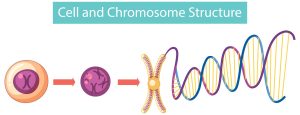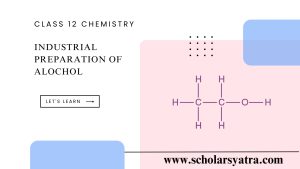Acid value (AV), also known as acid number, neutralization number, or acidity, is a quantity used in chemistry to express the amount of acidity in a certain chemical compound. It’s the amount of base typically potassium hydroxide (KOH) expressed in milligrams that is necessary to neutralize the acidic components in 1 gram of a sample.
Table of Contents
ToggleWhat is Acid Value?
Acid value is an essential analytical parameter used to measure the amount of carboxylic acid groups (C(=O)OH) or free fatty acids (FFA) present in fats and oils. It is commonly used to assess the quality, degradation, and purity of oils and fats. The acid value is expressed as the amount (in milligrams) of potassium hydroxide (KOH) required to neutralize the free fatty acids in one gram of oil or fat.
Principle of Acid Value
The determination of acid value is based on the neutralization reaction between free fatty acids present in the oil or fat sample and a standard alkali solution. The oil or fat sample is dissolved in a solvent mixture and titrated with a standard solution of potassium hydroxide or sodium hydroxide using phenolphthalein as an indicator to identify the endpoint.
RCOOH + KOH = RCOO– K+ + H2O
Chemicals and Solutions Required
To estimate the acid value of an oil or fat sample, the following chemicals and solutions are required:
- Standard Potassium Hydroxide (KOH) or Sodium Hydroxide (NaOH) solution: Typically 0.1 N.
- Solvent mixture: A mixture of ethanol and diethyl ether (1:1 or 2:1 ratio) is commonly used to dissolve the oil or fat sample.
- Phenolphthalein Indicator: Used to indicate the endpoint of the titration.
- Sample oil or fat: The substance whose acid value is to be measured.
Acid Value Formula
The acid value is calculated using the following formula:
Acid Value=56.1×V×N/W
Where:
- VVV = Volume of KOH (or NaOH) solution used in milliliters.
- NNN = Normality of the KOH (or NaOH) solution.
- WWW = Weight of the oil or fat sample in grams.
- 56.1 = Molecular weight of KOH.
Procedure to Estimate Acid Value
Following are the procedures to estimate the acid value of the given sample:
- Sample Preparation:
- Weigh accurately around 1–2 grams of the oil or fat sample into a clean and dry 250 mL conical flask.
- Dissolving the Sample:
- Add approximately 50 mL of the solvent mixture (ethanol and diethyl ether) into the flask and shake well until the sample dissolves completely.
- Addition of Indicator:
- Add 1–2 drops of phenolphthalein indicator to the solution.
- Titration:
- Titrate the solution with 0.1 N KOH (or NaOH) solution while continuously swirling the flask.
- Continue the titration until a faint pink color persists for at least 30 seconds, indicating the endpoint has been reached.
- Calculation:
- Record the volume of KOH (or NaOH) used and use the acid value formula to calculate the result.
Applications of Acid Value
The 5 reliable applications of acid value are:
- Quality Control in the Food Industry:
- Acid value is frequently used in the food industry to assess the freshness and edibility of oils and fats. A low acid value typically indicates that the oil or fat is of good quality and less prone to oxidation and rancidity.
- Monitoring Storage Stability:
- The acid value helps in monitoring the stability of oils during storage. An increase in acid value over time can indicate hydrolytic rancidity or the breakdown of triglycerides into free fatty acids due to moisture or microbial action.
- Cosmetic and Pharmaceutical Industry:
- The acid value is used to determine the purity and stability of raw materials in cosmetic and pharmaceutical formulations.
- Biodiesel Production:
- The acid value is also significant in the production of biodiesel, where it helps in assessing the suitability of oils for conversion to biofuels.
Iodine value
The amount of iodine in grams that is consumed by 100 grams of a chemical compound is known as the iodine value (often referred to as the iodine absorption value, iodine number, or iodine index) in chemistry. When assessing the level of unsaturation in fats, oils, and waxes, iodine values are frequently utilized. Unsaturated fatty acids mostly attach to double bonds that are highly reactive to halogens.
Acid Value
Acid value (AV), also known as acid number, neutralization number, or acidity, is a quantity used in chemistry to express how acidic a certain chemical compound is. It’s the amount of base—typically potassium hydroxide (KOH)—expressed in milligrams that is necessary to neutralize the acidic components in 1 gram of a sample.
Examples of common acid values:
- Olive Oil: High-quality extra virgin olive oil usually has an acid value below 0.8 mg KOH/g.
- Coconut Oil: Typically has an acid value below 2 mg KOH/g.
- Rancid or Poor-Quality Oil: May have an acid value exceeding 5 mg KOH/g, indicating significant degradation.
Differences Between Iodine Value and Acid Value
The iodine value and acid value are both indicators used in the analysis of oils and fats, but they provide different information:
- Iodine Value:
- Indicates the degree of unsaturation in an oil or fat.
- Represents the number of grams of iodine absorbed by 100 grams of oil or fat.
- A higher iodine value means a higher degree of unsaturation and susceptibility to oxidation.
- Acid Value:
- Measures the amount of free fatty acids present in an oil or fat.
- Indicates the level of hydrolytic rancidity.
- Does not provide information about the unsaturation level.
Acid value of oil
The acid values of some oils are listed below:
| S.N | Oil | Acid value |
| 1 | maize | 0.223 |
| 2 | soya | 0.60 |
| 3 | virgin oil | 6.6 |
| 4 | used frying oil | 31 |
| 5 | canola | 0.071 |
| 6 | bee’s wax | 17-36 |
The acid value is a vital analytical parameter in assessing the quality, stability, and usability of fats and oils. It serves as an indicator of free fatty acid. Analyzing the acid value is essential in industries where oil and fat quality is critical, such as food processing, cosmetics, and biofuel production.







